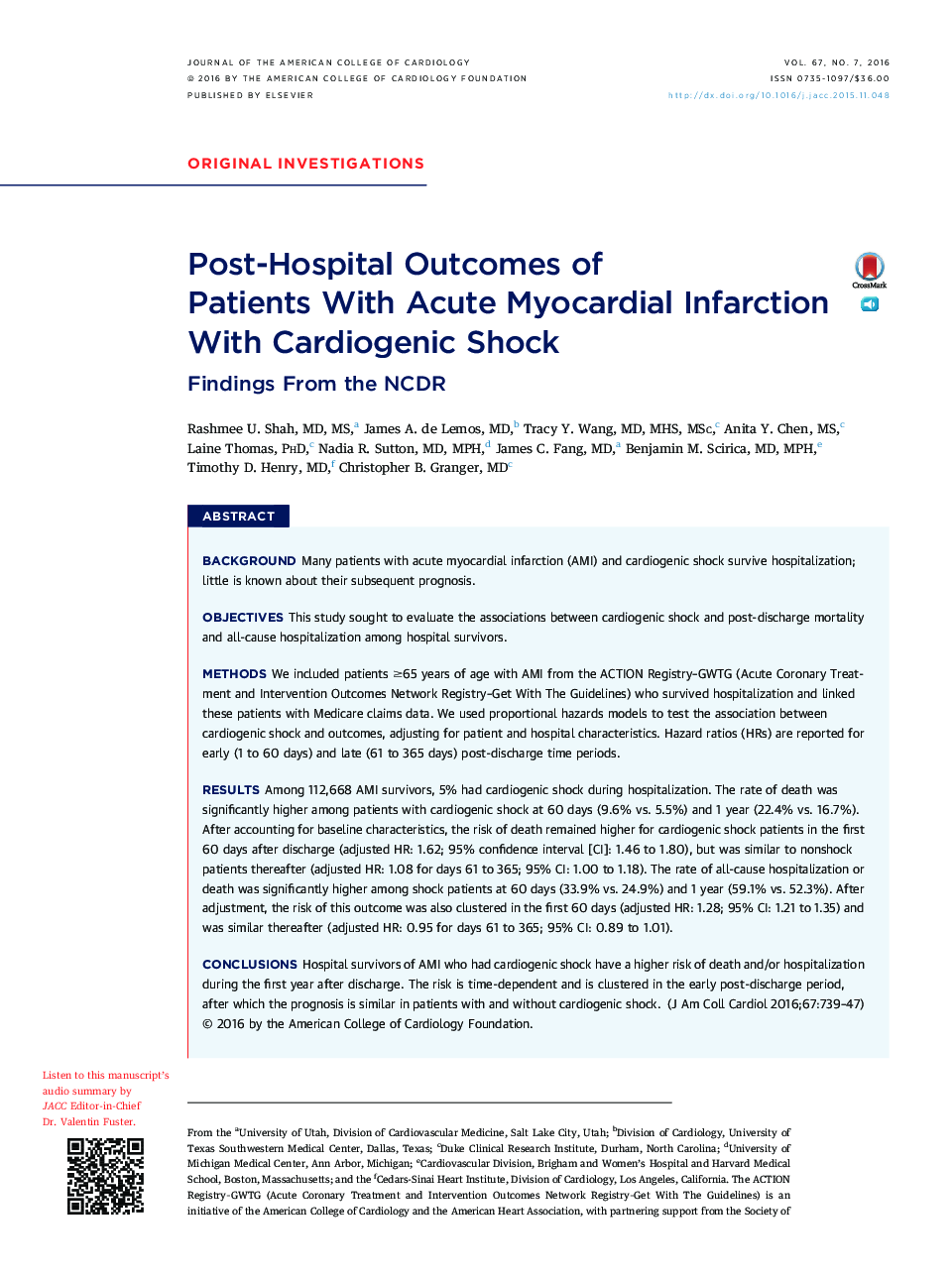| Article ID | Journal | Published Year | Pages | File Type |
|---|---|---|---|---|
| 5982334 | Journal of the American College of Cardiology | 2016 | 9 Pages |
BackgroundMany patients with acute myocardial infarction (AMI) and cardiogenic shock survive hospitalization; little is known about their subsequent prognosis.ObjectivesThis study sought to evaluate the associations between cardiogenic shock and post-discharge mortality and all-cause hospitalization among hospital survivors.MethodsWe included patients â¥65 years of age with AMI from the ACTION Registry-GWTG (Acute Coronary Treatment and Intervention Outcomes Network Registry-Get With The Guidelines) who survived hospitalization and linked these patients with Medicare claims data. We used proportional hazards models to test the association between cardiogenic shock and outcomes, adjusting for patient and hospital characteristics. Hazard ratios (HRs) are reported for early (1 to 60 days) and late (61 to 365 days) post-discharge time periods.ResultsAmong 112,668 AMI survivors, 5% had cardiogenic shock during hospitalization. The rate of death was significantly higher among patients with cardiogenic shock at 60 days (9.6% vs. 5.5%) and 1 year (22.4% vs. 16.7%). After accounting for baseline characteristics, the risk of death remained higher for cardiogenic shock patients in the first 60 days after discharge (adjusted HR: 1.62; 95% confidence interval [CI]: 1.46 to 1.80), but was similar to nonshock patients thereafter (adjusted HR: 1.08 for days 61 to 365; 95% CI: 1.00 to 1.18). The rate of all-cause hospitalization or death was significantly higher among shock patients at 60 days (33.9% vs. 24.9%) and 1 year (59.1% vs. 52.3%). After adjustment, the risk of this outcome was also clustered in the first 60 days (adjusted HR: 1.28; 95% CI: 1.21 to 1.35) and was similar thereafter (adjusted HR: 0.95 for days 61 to 365; 95% CI: 0.89 to 1.01).ConclusionsHospital survivors of AMI who had cardiogenic shock have a higher risk of death and/or hospitalization during the first year after discharge. The risk is time-dependent and is clustered in the early post-discharge period, after which the prognosis is similar in patients with and without cardiogenic shock.
